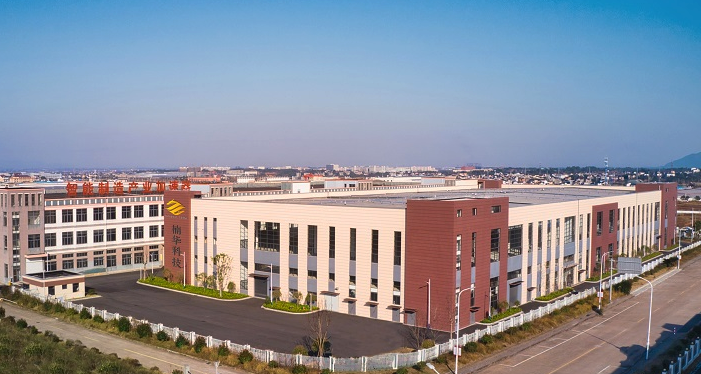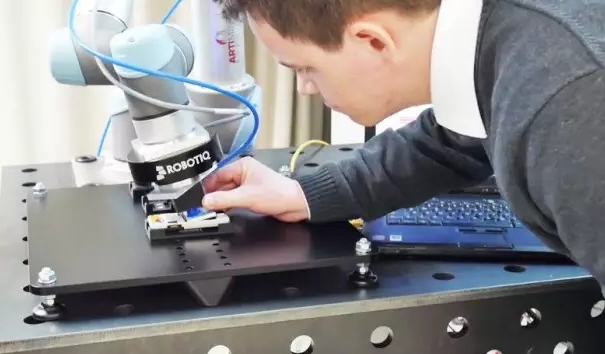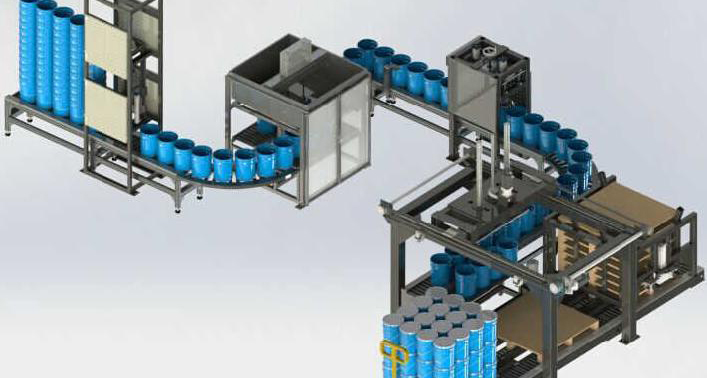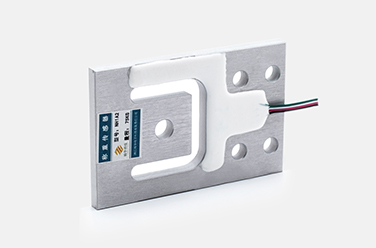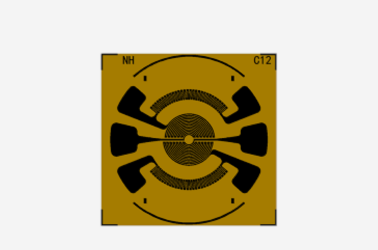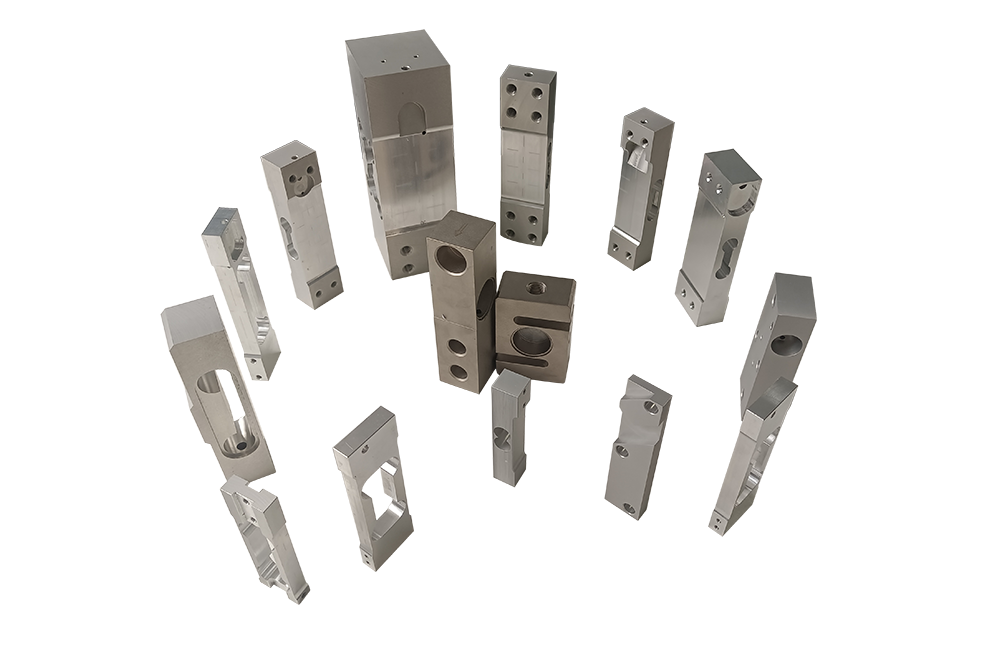Summary
Most domestic manufacturers of strain gauges use solvents to clean the surface of the foil before the glue is thrown on the surface of the foil. However, domestic foil manufacturers have cleaned the foil once before leaving the factory. Studies have found that different adhesive films exhibit different bonding properties on the surface of the foil. For polyimide films, if the foil is not cleaned before use, the peeling force after bonding is greater and the structure is more stable. The cleaning process of the foil surface has no significant effect on the adhesion of the phenolic film. However, the epoxy adhesive film shows better bonding performance after cleaning the surface of the foil.
Keywords: strain gauge, foil, polyimide, epoxy resin, phenolic resin
0 Foreword
In 1856, when Thomson was laying a submarine cable across the Atlantic Ocean, he discovered that the resistance value of the cable would change when it was mechanically deformed. During 1936-1938, Professor Simmons of California Institute of Technology and Professor Lucci of Massachusetts Institute of Technology respectively developed resistance wire paper-based strain gauges at the same time. After decades of development, the accuracy of resistance strain gauges in the early 1970s has made great strides. Later, with the development of the electronics industry and computing technology, resistance strain gauges have made great progress in product standardization, serialization, and large-scale production processes [1].
Modern society is gradually entering the era of interconnection of all things and data is king. As the terminal of the Internet of Things and the source of data collection, sensors endow all things with "sensory" functions, and are more accurate and have a wider range of perception than human perception [2]. In recent years, the demand for resistance strain gauges at home and abroad has increased substantially. However, compared with advanced developed countries such as Germany, the United States, and Japan, we have a significant gap in the development and manufacturing process of high-quality resistance strain gauges. One of the reasons for this gap is the adhesion problem between the resistance-sensitive grid of the resistance variable meter and the base material.
In order to improve the stability of the adhesion between the resistance-sensitive grid and the base material, domestic manufacturers must clean the surface of the alloy foil before coating or bonding the alloy foil. Different manufacturers have different cleaning processes. In this paper, the different surface treatment processes of Constantan and Evan alloy foils have their effects on the peeling strength of the glue on the surface.
1 experiment
1.1 Reagents and raw materials
Acetone (industrial product, Nantong Xinquan Chemical Material Co., Ltd.), butanone (industrial product, Nantong Xinquan Chemical Material Co., Ltd.), potassium carbonate (analytical grade, Shanghai Sinopharm), potassium hydroxide (analytical grade, Shanghai Sinopharm), Absorbent cotton (Guangzhou Jiaying Nonwoven Products Factory), polyimide glue (homemade), epoxy resin glue (homemade), phenolic resin glue (homemade), constantan alloy foil (thickness 5μm, Shanghai Yuer), Yiwen Alloy foil (thickness 5μm, Shanghai Yuer).
1.2 Surface treatment and gluing process of alloy foil
As shown in Figure 1, first place the foil on a horizontal surface for scrubbing. Use absorbent cotton dipped in methyl ethyl ketone to scrub again, then use absorbent cotton dipped in acetone to scrub again, and finally wipe with absorbent cotton dipped in methyl ethyl ketone, and dry at 100°C for 20 minutes. . The dried foil is glued and fixed on the titanium alloy frame, and then glue is spun on the alloy foil as shown in Figure 1, and 3±0.1 grams of glue is spun in the area of 100mm×100mm. The rotation speed is 650 rpm, and the glue rejection time is 7 seconds.

Figure 1 Traditional foil spin-off process
As shown in Figure 2, the electrochemical cleaning process is used to clean the alloy foil. The electrolysis process uses a two-electrode constant current electrolysis process, the electrolyte is 30g/L potassium carbonate aqueous solution, the current density during the electrolysis process is 4A/dm2, and the counter electrode is a stainless steel electrolytic cell. First, electrolyze the foil as the negative electrode for 5 minutes, and then electrolyze the positive electrode for 30 seconds, repeatedly rinse with water, and dry at 100°C for 20 minutes. The glue rejection process is the same as above.

Figure 2 Electrochemical cleaning foil
1.3 The curing process of glue
Polyimide glue curing process: 180°C for 1 hour, epoxy resin glue curing process: 185°C for 3 hours, phenolic resin glue curing process: 190°C for 2 hours.
1.4 Peel strength test
The peel strength test is carried out in accordance with the national standard GB/T 2792-2014. The strength test uses the Haida multi-function tensile testing machine (HD-B609B-S), and the test rate is 80mm/min.
2 Results and discussion
2.1 Surface adhesion properties of constantan foil
Figure 3 shows the stretching and peeling process of three different adhesive films on the surface of the constantan foil. During the stretching and peeling process of the epoxy adhesive film, the scrubbing of the surface of the constantan foil has a very obvious effect on the peeling force of the epoxy adhesive film. The scrubbing of the surface of the constantan foil can significantly increase the force value of the peeling force, and it can also increase The stability of the adhesion between the foil and the film. For the phenolic film commonly used by domestic enterprises, the effect of scrubbing the surface of the foil on the peeling force of the phenolic film is not obvious. At the same time, the difference between the maximum peeling force and the minimum peeling force of the phenolic film during the stretching and peeling process is relatively large, which indicates that the bonding structure between the constantan foil and the phenolic film is very unstable and stable. It will affect the stability of strain gauge products.
For the PI film, unexpected results have appeared. The peeling force between the non-scoured foil and the PI film is significantly higher, and the bonding structure between the PI film and the constantan foil is relatively stable, the largest The difference between the peel force and the minimum peel force is less than 11 gf, that is, the reverse result of scrubbing the constantan foil. In further research, it is found that manual scrubbing of constantan foil with a thickness of less than 5 μm is very easy to form some wrinkles on the surface of the foil, as shown in Figure 4. These wrinkles affect the wettability of the glue on the one hand, and on the other hand, during the volatilization of the solvent in the glue and the curing of the glue, stress concentration points are easily formed inside the glue film, which leads to the instability of the adhesive structure of the glue film. The peeling force is also relatively small.

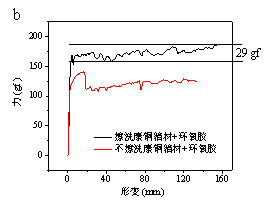
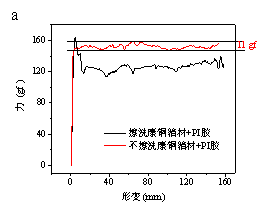
Figure 3 Stretching and peeling process of different adhesive films on the surface of constantan foil
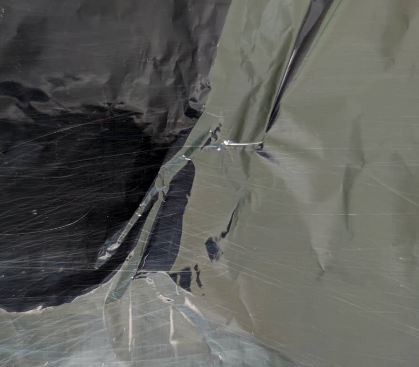
Figure 4 Wrinkles on the foil surface after scrubbing
2.2 Surface adhesion performance of Yiwen foil
Figure 5 shows the stretching and peeling process of three different adhesive films on the surface of Evan foil. Obviously, the peeling force of the epoxy film on the surface of the Evan foil is the lowest, which is less than 80 gf. Moreover, the effect of scrubbing the foil surface on the peeling force is very obvious. The peeling force of the epoxy adhesive film on the surface of the Evan foil after scrubbing is almost twice the peeling force of the non-scrubbed foil surface. For the phenolic film, the scrubbing and cleaning of the surface of the Evan foil did not significantly affect the peeling force of the film. The peeling force was greater than 176 gf, and the fluctuation range was less than 34 gf.
The peeling force of PI film on Evan foil is relatively high, the maximum peeling force is close to 400 gf, but the fluctuations are large, especially the fluctuation range of PI film on the surface of the scrubbed foil reaches 125 gf. However, the overall performance of the foil without scrubbing is better, the peeling force is greater than 300 gf, and the upper and lower fluctuation range is less than 46 gf.
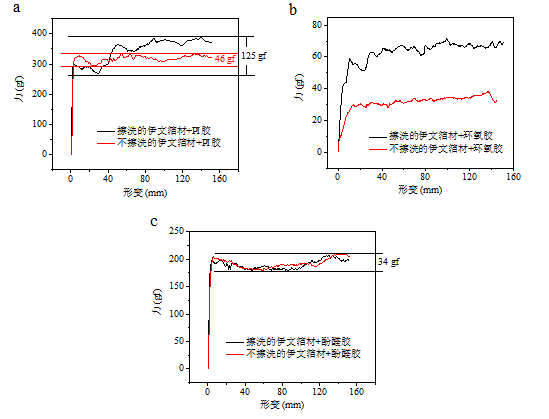
Figure 5 Stretching and peeling process of different adhesive films on the surface of Evan foil
Different adhesive films show different bonding properties on different foil surfaces, on the one hand, it is related to the characteristics of the foil surface, and on the other hand, it is also related to the characteristics of the film itself. In addition, the solvent used in the glue also has a significant impact on bonding. Because the solvent with strong dissolving power can dissolve part of the organic dirt on the surface of the foil into the glue layer, thereby enhancing the stability of the cemented structure.
3 Conclusion
Most domestic manufacturers of strain gauges use solvents to clean the surface of the foil before the glue is thrown on the surface of the foil. However, the cleaning of the foil surface has different effects on the adhesive properties of different adhesive films on the foil surface. First, for PI glue, the scrubbing of the foil surface reduces the adhesion stability of the film on the foil surface. This may be because the foil scrubbing process increases the foil surface wrinkles, which reduce the stability of the bonding structure. Even when PI glue is used, the scrubbing process should be cancelled. Second, with epoxy glue, the scrubbing of the surface of the foil obviously increases the stability of the bonding structure, so the scrubbing process before the use of the foil should be maintained. Third, for phenolic glue, the scrubbing of the foil surface has no significant effect on the stability of the bonding structure, and the scrubbing process before the foil is used should be cancelled.
references:
1. Lin Jing, Ni Xidong, Qi Peiyun, Chen Xi, Feng Wei. Pasting technology of strain gauges in strain-type torque sensors. Ship Engineering, 2012, 34(1): 52-53.
2. He Yanxiang, Sun Fajun, Li Qingan, He Jing, Wang Lumeng. A review of public key mechanisms in wireless sensor networks. Chinese Journal of Computers, 2020, 03: 381-408.
3. Shi Yu, Yao Chengwei, Li Qi. Development of an epoxy-phenolic base glue for strain gauges at room temperature. Thermosetting Resin, 2009, 24(4): 37-39.
